İzmir is a city in western Turkey, renowned for its spectacular coastal scenery and vibrant culture. It is also home to a unique and diverse population of birds, making it a fantastic destination for bird watching.
With its lush forests, wetlands, and coastal areas, İzmir is home to a wide variety of species, including several rare and endangered species. From majestic raptors to exotic waterfowl, İzmir offers something for every bird enthusiast.
Whether you’re a beginner or an experienced birder, you’ll find plenty to explore in İzmir’s diverse habitats.
1. Grey Heron
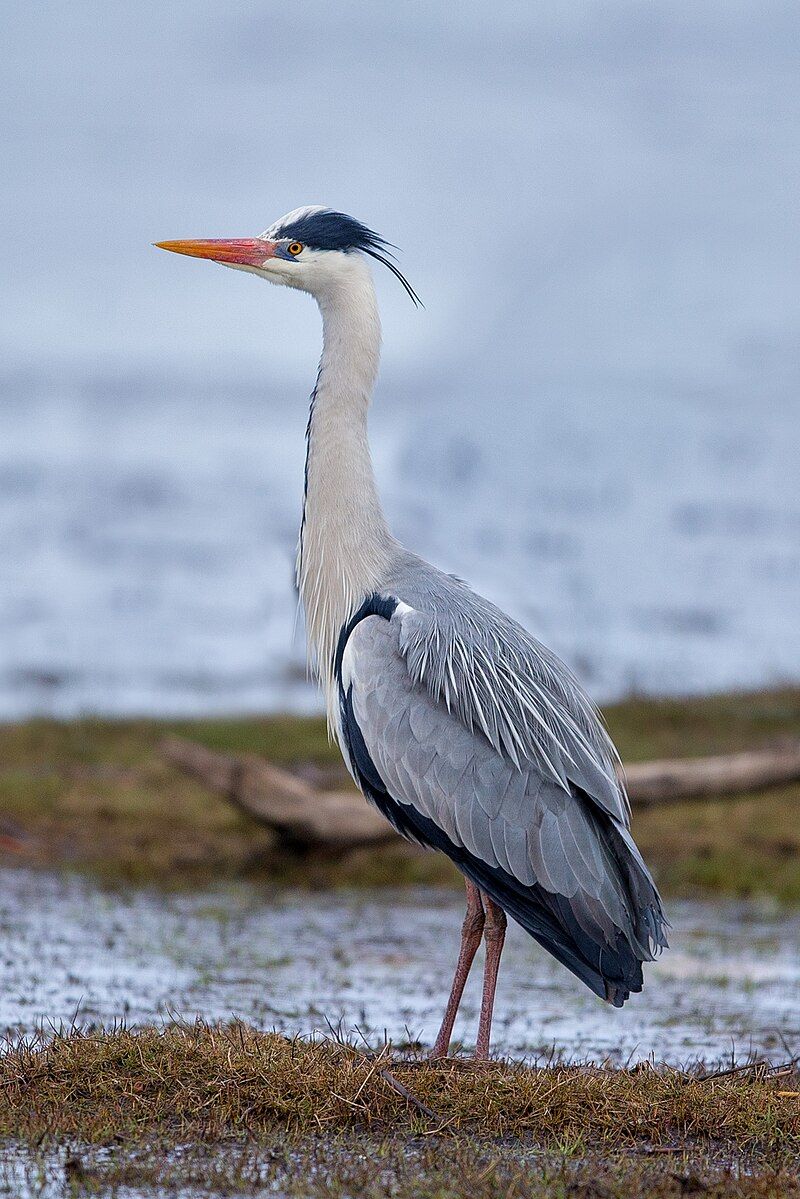
The grey heron is a graceful and elegant bird that is a part of the heron family, Ardeidae. It is a long-legged wading bird that is native to temperate parts of Europe, Asia, and Africa. It is usually a resident bird and is seen throughout the year in most of its range.
However, some populations of grey herons that inhabit more northern regions migrate southwards in autumn in search of warmer climates. The grey heron is usually found near bodies of water such as lakes, rivers, and streams.
It is a solitary bird but often congregates in large groups during the breeding season. Its diet mainly consists of fish, but it is also known to feed on amphibians, small mammals, and insects.
Grey herons usually nest in trees, but may also nest on the ground in marshes or other wetland habitats.
| Kingdom | Animalia |
| Phylum | Chordata |
| Class | Aves |
| Order | Pelecaniformes |
| Family | Ardeidae |
| Genus | Ardea |
| Species | A. cinerea |
2. Black-Winged Stilt
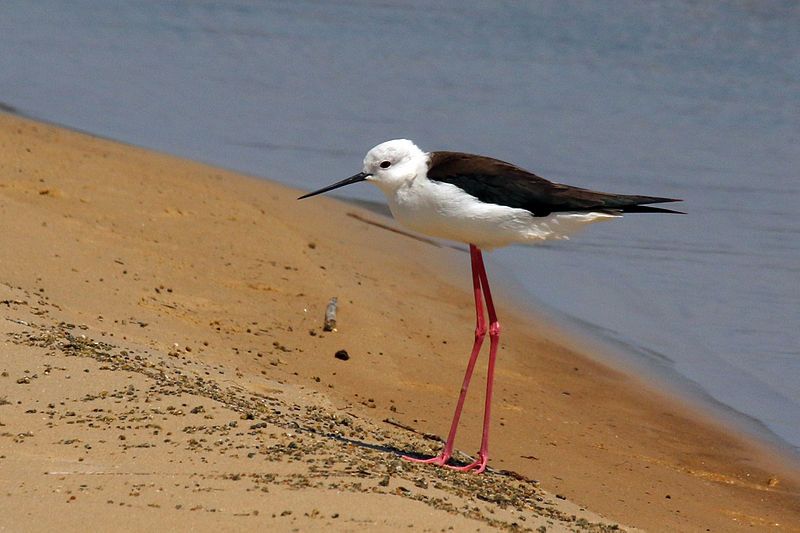
The black-winged stilt is a member of the avocet and stilt family, which is a type of wader, a type of shorebird. It is widely distributed across the globe, with a high population density in many areas.
It is characterized by its extremely long legs, which makes it a very efficient forager. Its scientific name, H. himantopus, is used to refer to the species as a whole, as it is essentially a single, cosmopolitan species found in many regions.
The black-winged stilt is an important part of many wetland and shoreline ecosystems, as it is a major predator of small aquatic animals, which helps to keep the population of other species in check.
Additionally, it is a vital food source for many larger animals, such as birds of prey.
| Kingdom | Animalia |
| Phylum | Chordata |
| Class | Aves |
| Order | Charadriiformes |
| Family | Recurvirostridae |
| Genus | Himantopus |
| Species | H. himantopus |
3. Ferruginous Duck
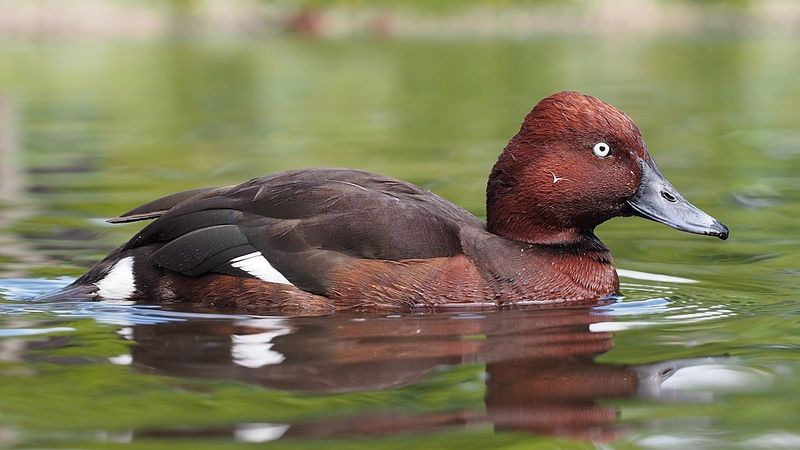
The ferruginous duck is a species of bird found in Eurosiberia, a region spanning Europe and Siberia. It is a medium-sized diving duck that is known by several other names, including ferruginous pochard, common white-eye, and white-eyed pochard.
The scientific name of this species is derived from two sources: the Greek word aithuia, which was used by authors such as Hesychius and Aristotle to refer to an unidentified seabird and nyrok, the Russian word for duck.
This species is known for its distinctive reddish-brown coloration, which is where its common name, ferruginous duck, comes from. Its diet consists mainly of aquatic plants and small fish and it breeds in shallow wetlands and ponds.
The ferruginous duck is vulnerable to habitat destruction and overhunting, but it is still listed as “Least Concern” by the IUCN Red List of Threatened Species.
| Kingdom | Animalia |
| Phylum | Chordata |
| Class | Aves |
| Order | Anseriformes |
| Family | Anatidae |
| Genus | Aythya |
| Species | A. nyroca |
4. Dalmatian Pelican
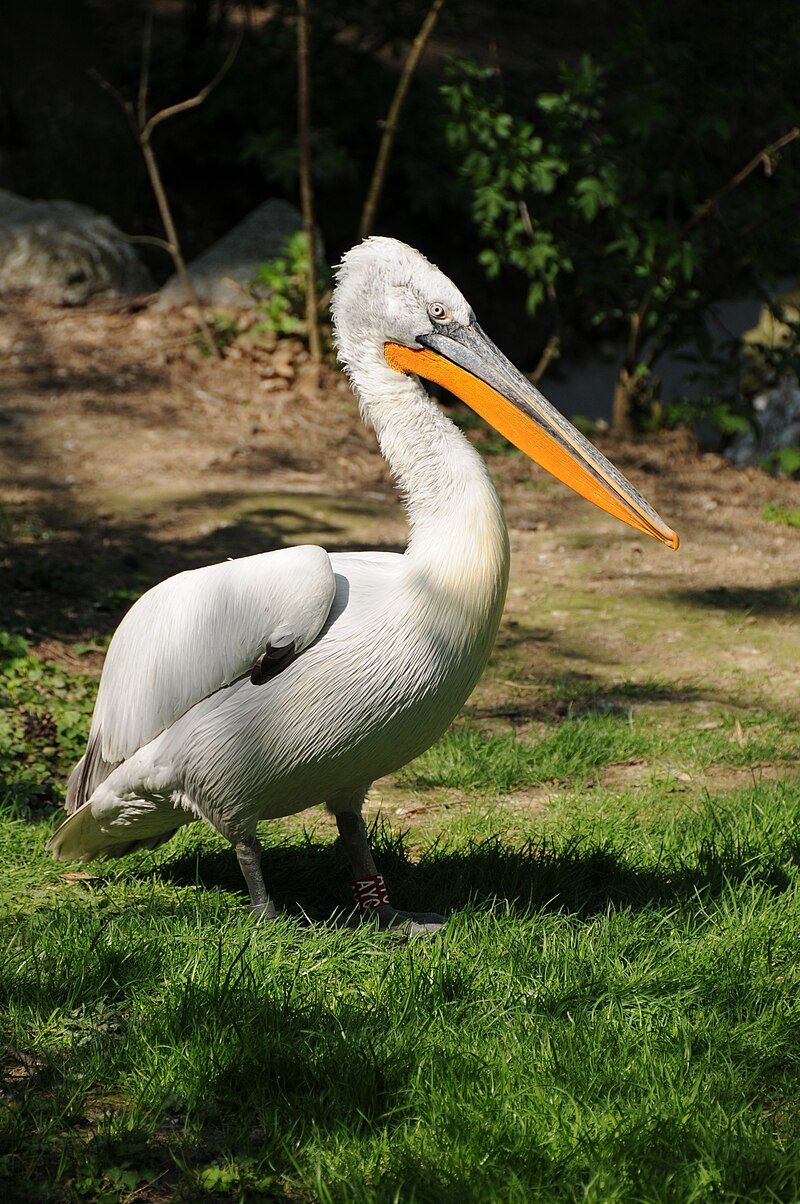
The Dalmatian pelican is a magnificent bird that stands out among its family. It is the largest member of the pelican family, and it may even be the largest freshwater bird in the world, eclipsing even the largest swans in terms of weight and length.
These impressive birds have impressive wingspans, rivaling those of the majestic albatrosses. When they fly in flocks, they do so gracefully and in synchrony, creating a beautiful sight. In addition to their size, Dalmatian pelicans have an elegant appearance.
They have long, thin wings that they use to soar through the air and long, curved necks that add to their beauty. Their feathers are mostly white, with some having brown or gray spots. All in all, the Dalmatian pelican is an amazing bird with impressive size, beauty, and grace.
| Kingdom | Animalia |
| Phylum | Chordata |
| Class | Aves |
| Order | Pelecaniformes |
| Family | Pelecanidae |
| Genus | Pelecanus |
| Species | P. crispus |
5. Eurasian Collared Dove
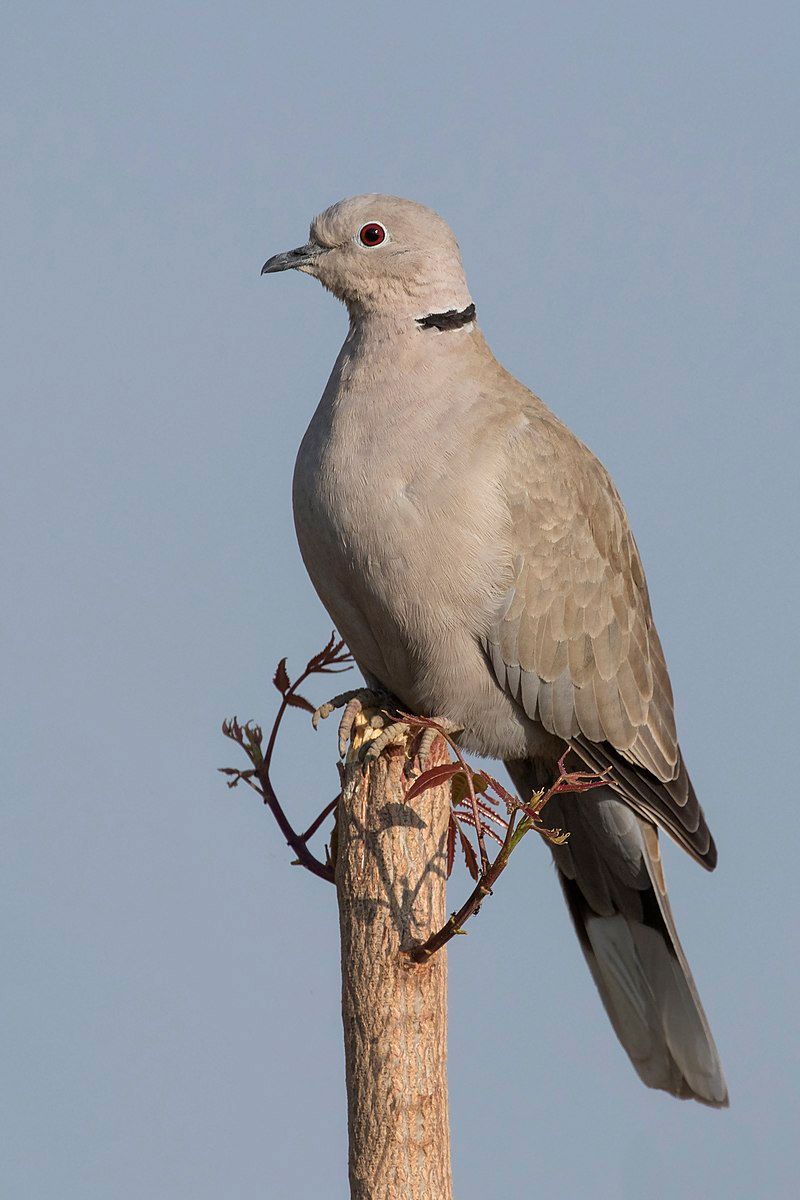
The Eurasian collared dove is a species of dove that can be found in Europe and Asia, making it native to these two regions. It has also been introduced to other places, such as Japan, North America, and some islands in the Caribbean.
This species has a very large global range, and its population trend has been steadily increasing, which is why it has been listed on the IUCN Red List as a species of Least Concern since 2014.
This means that the Eurasian collared dove is not considered to be in danger of extinction, and its population can be seen to be increasing in abundance. This species is also a common sight in many areas, making it a familiar bird for many people.
The Eurasian collared dove is an important part of the natural environment, and its increasing populations are a testament to how well it has adapted to its new habitats.
| Kingdom | Animalia |
| Phylum | Chordata |
| Class | Aves |
| Order | Columbiformes |
| Family | Columbidae |
| Genus | Streptopelia |
| Species | S. decaocto |
6. Ciconiidae
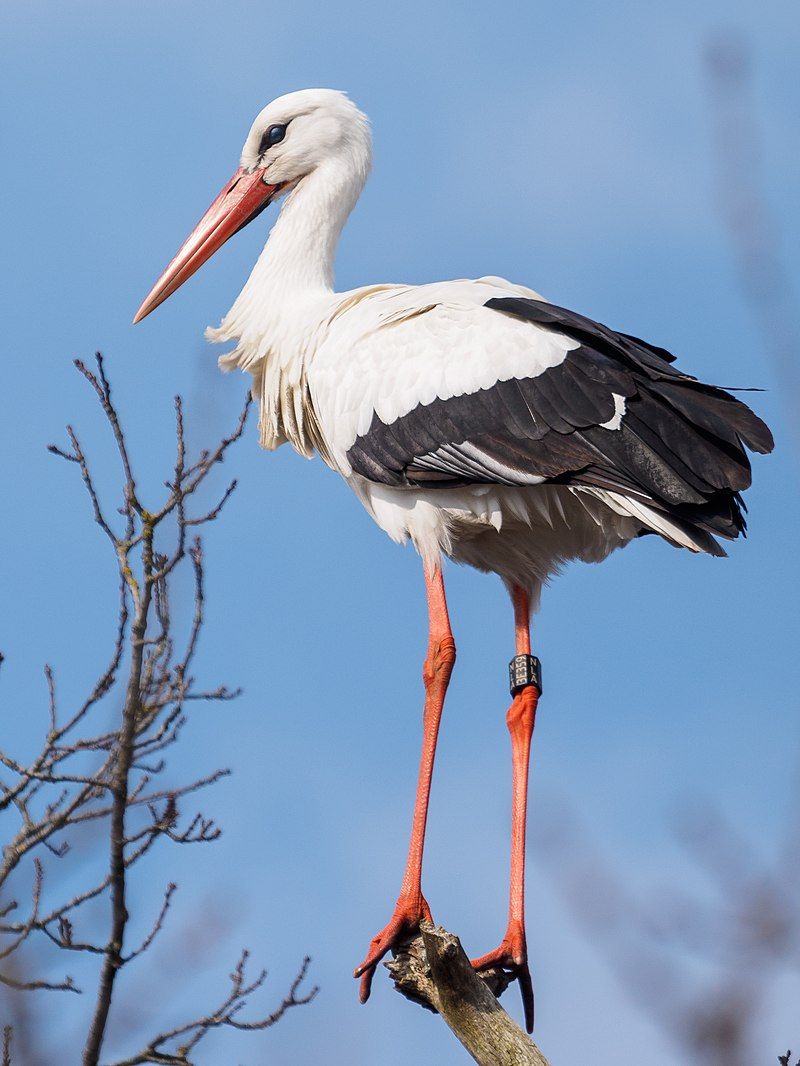
Storks are large birds that belong to the Ciconiidae family and make up the Ciconiiformes order. They have long, stout bills and long legs and necks. These features give them an advantage when wading in water and looking for food.
In the past, the Ciconiiformes order also included a number of other families, such as herons and ibises, but they have since been moved to different orders.
This is likely because the characteristics of storks, herons, and ibises are now better understood, allowing for them to be separated into distinct categories.
| Kingdom | Animalia |
| Phylum | Chordata |
| Class | Aves |
| Clade | Aequornithes |
| Order | Ciconiiformes |
| Family | Ciconiidae |
7. Greater Flamingo
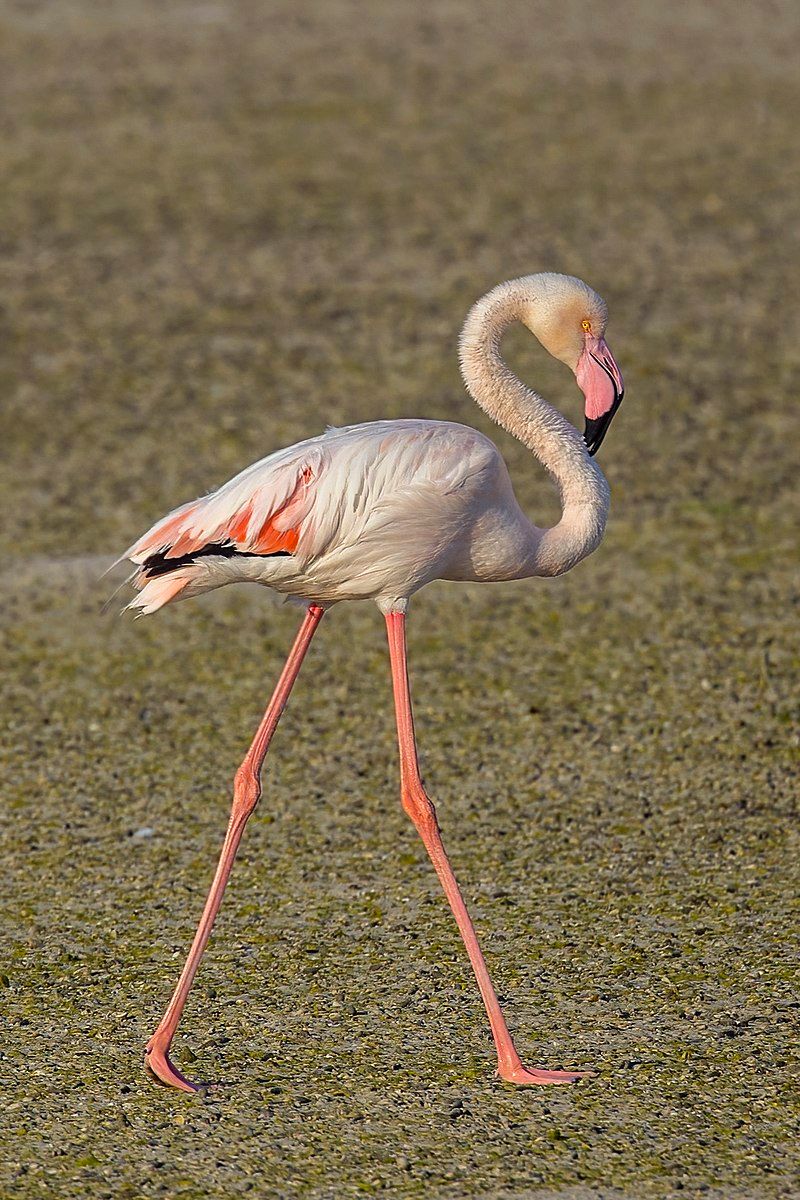
The greater flamingo is the most abundant and largest species of flamingo in the world.
They are found in many different regions, including Northern and Sub-Saharan Africa, the Indian Subcontinent, the Middle East, the Levant, the Persian Gulf, the Gulf of Aden, the Red Sea, and some of the Mediterranean countries of Southern Europe.
This species of bird has a wide range of habitat preferences and can be found in wetlands, shallow lagoons, estuaries, coastal mudflats, saltpans, and brackish lakes. The greater flamingo is well adapted to its environment and is able to survive in a variety of climates.
They are able to withstand hot and dry conditions, as well as cold temperatures.
The flamingo is also an opportunistic feeder and will eat a variety of items from small fish, worms, aquatic insects, crustaceans, and mollusks to seeds and other plant material. The greater flamingo is a highly social species and will gather in huge flocks in the thousands.
They will form large breeding colonies, where they will build nests and raise their young.
Flamingos are known for their bright pink feathers, which are a result of their diet of brine shrimp or plankton. The greater flamingo is a species that is important to the environment and is considered a keystone species in many areas.
They are important to the food web, as their presence helps to maintain a healthy ecosystem. As a result, their populations are monitored closely by conservationists, and many areas have implemented protective regulations for their populations.
| Kingdom | Animalia |
| Phylum | Chordata |
| Class | Aves |
| Order | Phoenicopteriformes |
| Family | Phoenicopteridae |
| Genus | Phoenicopterus |
| Species | P. roseus |
8. Black Stork
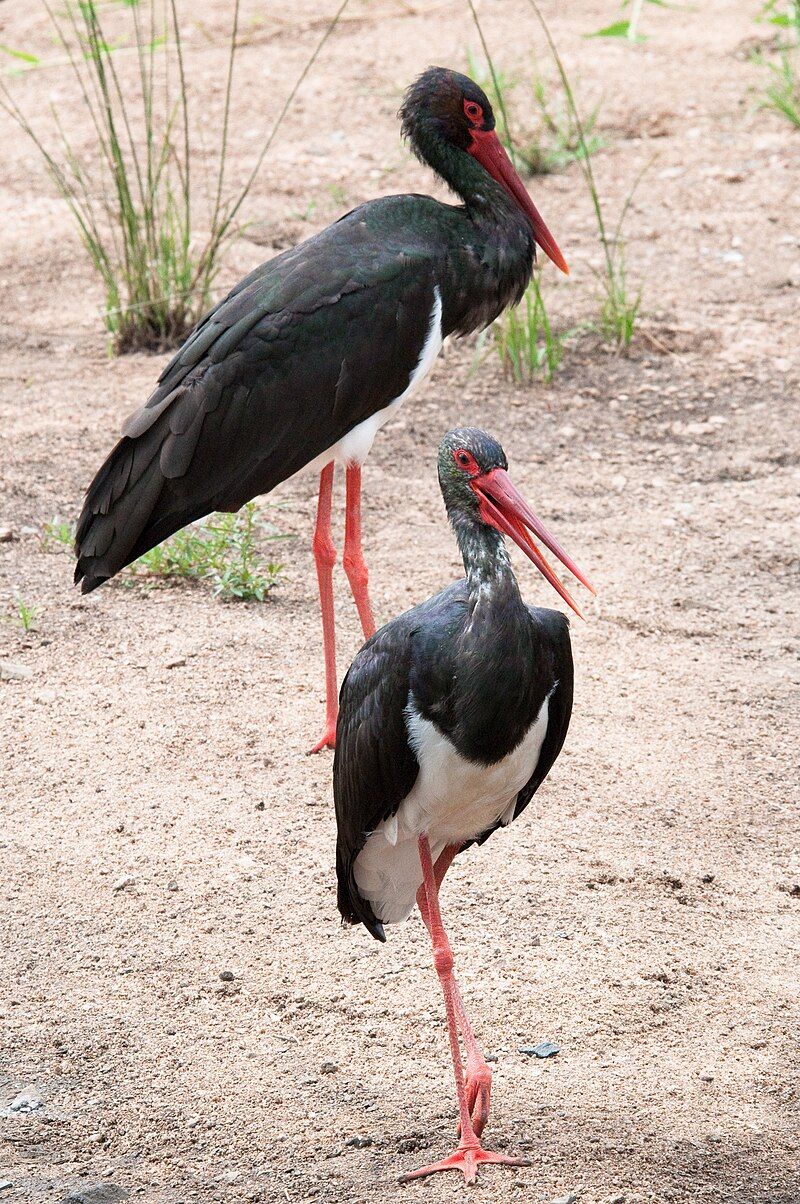
The black stork is an impressive bird belonging to the stork family Ciconiidae. It is the only member of its genus, Ciconia, and is sometimes called the black wood stork. It was first described by Carl Linnaeus in the 10th edition of his Systema Naturae in 1758.
It is a large bird, typically measuring between 75 and 90 cm in length, with a wingspan of up to 150 cm. It has a black plumage on its head, neck, chest, and wings, while the rest of its body is white.
Its long, thin neck, long legs, and dagger-like bill are distinctive characteristics. The black stork is found throughout Europe, from Scandinavia to the Mediterranean, and in parts of Asia and Africa.
It is a migratory species, spending the winter in Africa and returning to its breeding grounds in Europe during the summer months. It inhabits wetland areas such as marshes, rivers, and lakes, as well as open grasslands and forests.
It feeds mainly on fish, frogs, and small mammals, but it also eats reptiles, insects, and small birds. The black stork is listed as vulnerable on the IUCN Red List, due to its declining population. Conservation efforts are being made to help protect this species.
| Kingdom | Animalia |
| Phylum | Chordata |
| Class | Aves |
| Order | Ciconiiformes |
| Family | Ciconiidae |
| Genus | Ciconia |
| Species | C. nigra |
9. Great White Pelican
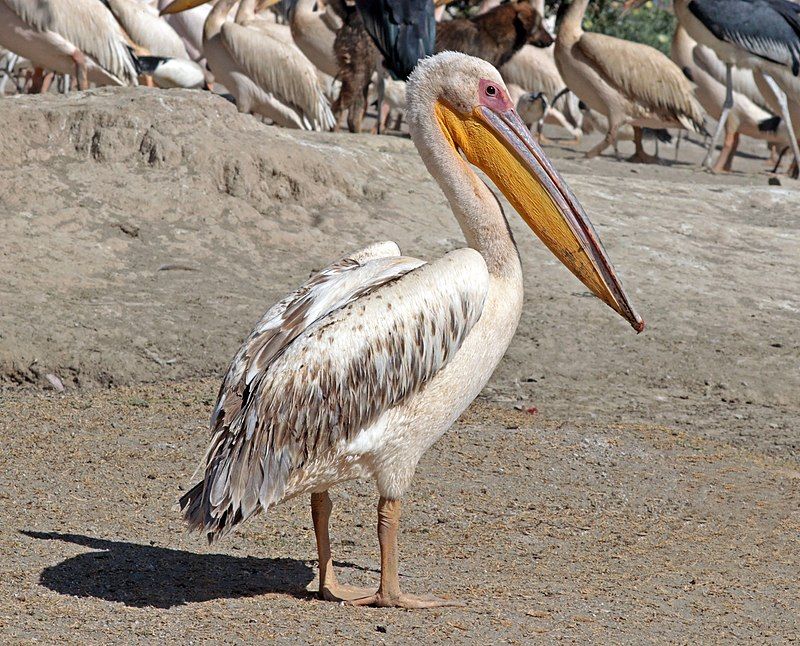
The great white pelican is an iconic bird found in the pelican family. It is also known as the eastern white pelican, rosy pelican or white pelican. This bird is found throughout many areas of the world, including southeastern Europe, Asia and Africa.
It tends to breed in wetlands and shallow lakes, where it can easily find its food. The great white pelican is a large bird with white feathers, a pinkish bill and a large, yellow pouch. Its wingspan can reach up to 10 feet and it can weigh up to 33 lbs.
It feeds mainly on fish, but it also eats other aquatic creatures such as frogs, crustaceans and aquatic insects. It hunts in groups, using its large bill to scoop up food.
The great white pelican is a majestic bird and its presence is an important part of many wetland and lake ecosystems.
| Kingdom | Animalia |
| Phylum | Chordata |
| Class | Aves |
| Order | Pelecaniformes |
| Family | Pelecanidae |
| Genus | Pelecanus |
| Species | P. onocrotalus |
10. Little Grebe
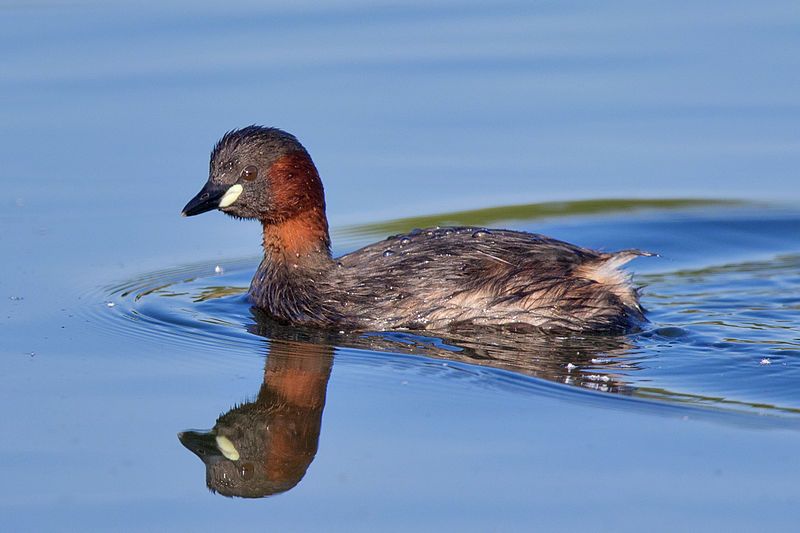
The little grebe, also known as a dabchick, is a water bird belonging to the Grebe family. Its scientific name is derived from two ancient languages, Greek and Latin.
The genus name ‘Tachybaptus’ is derived from two Greek words: ‘takhus’ which means ‘fast’ and ‘bapto’ which means ‘to sink under’. The specific name ruficollis is derived from Latin; ‘rufus’ meaning ‘red’ and the suffix ‘-collis’ meaning ‘-necked’.
‘-collis’ is also derived from the Latin word ‘collum’ meaning ‘neck’. In conclusion, the little grebe, or dabchick, is a water bird from the grebe family whose scientific name is derived from two ancient languages, Greek and Latin.
The genus name ‘Tachybaptus’ is derived from ‘takhus’ meaning ‘fast’ and ‘bapto’ meaning ‘to sink under’. The specific name ruficollis is derived from ‘rufus’ meaning ‘red’ and ‘-collis’ meaning ‘-necked’.
| Kingdom | Animalia |
| Phylum | Chordata |
| Class | Aves |
| Order | Podicipediformes |
| Family | Podicipedidae |
| Genus | Tachybaptus |
| Species | T. ruficollis |
11. Greylag Goose
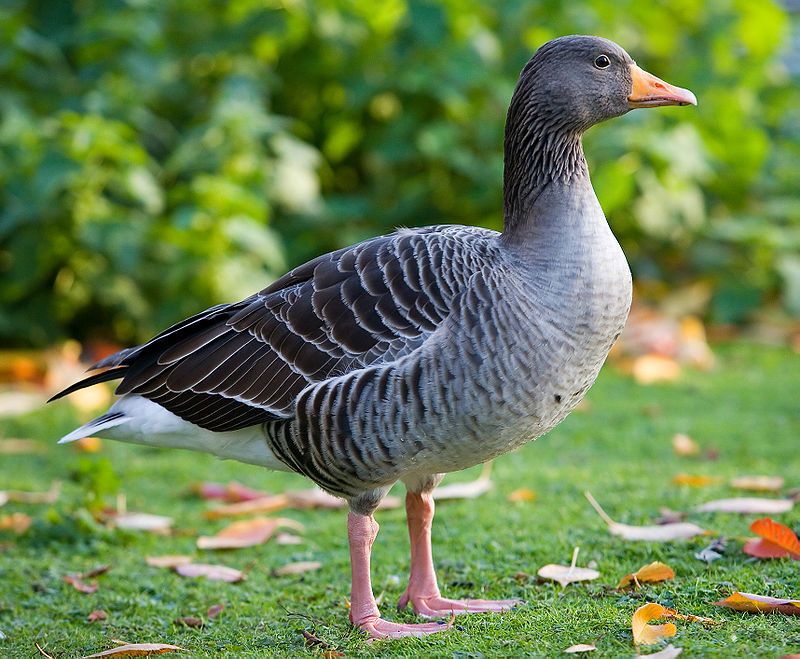
The Greylag Goose, also known as the Graylag Goose, is a species of large waterfowl that is part of the Anatidae family. It is the type species of its genus Anser and is easily identified by its mottled and barred grey and white plumage.
It is further distinguished by its vibrant orange beak and pink legs. These characteristics make it stand out from other birds in the same family.
Greylag Geese are usually seen in large groups and can be found in wetlands and fields, where they feed on grasses, grains, and other vegetation.
They are also known to forage for invertebrates in shallow waters. Greylag Geese are migratory birds and are known to travel across North America and Europe. They often form large flocks during their migration, which can contain thousands of individuals.
The Greylag Goose is a social bird, and they are known to form strong pair bonds between mates. They nest on the ground in shallow depressions and line the nest with down feathers. They also form strong bonds with their chicks and defend them vigorously against predators.
The Greylag Goose is an important species in the waterfowl family and is an iconic species of the wetlands. It is important to protect its habitats and ensure its numbers remain stable.
| Kingdom | Animalia |
| Phylum | Chordata |
| Class | Aves |
| Order | Anseriformes |
| Family | Anatidae |
| Genus | Anser |
| Species | A. anser |
12. Common Eider
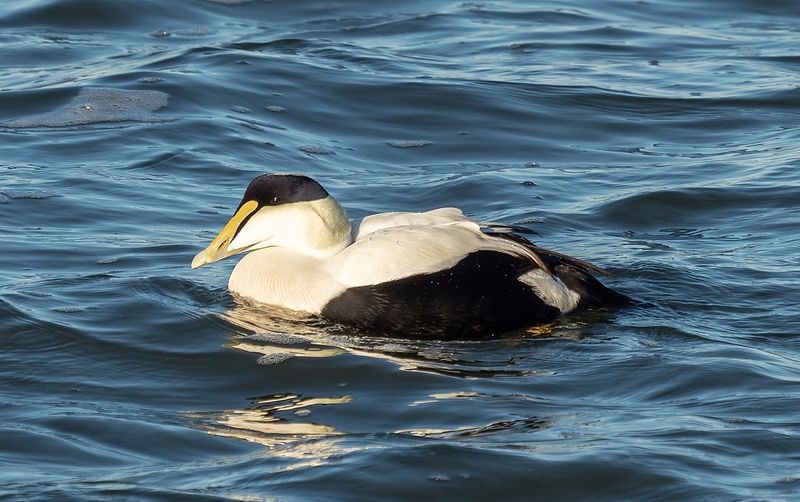
The common eider is a large sea-duck native to the northern coasts of Europe, North America and eastern Siberia. It is named after the 7th century Saint Cuthbert of Northumbria, who venerated the bird for its thick, downy feathers, and is also known as Cuddy’s duck.
The eider is a medium-sized duck and is the largest of the sea ducks, reaching up to 70 cm in length. The male has a black head, white breast and tail, and a greyish-brown back.
The female is a mottled brownish colour, with a black head and white patch on the back of the neck. The eider feeds mainly on molluscs, crustaceans and insects, which it dives for in shallow waters.
It nests in colonies and can be found breeding on rocky cliffs and islands, as well as on shingle beaches and coastal saltmarsh.
The female lays up to five eggs in a shallow depression which she lines with down plucked from her breast. The common eider is a migratory species and can be found in large flocks during the winter months.
The birds moult in the summer, and the feathers are used to make eiderdown, a very fine and luxurious insulation material.
The bird is also hunted for its meat, which is considered a delicacy. The common eider is a protected species in many countries and is classified as least concern on the IUCN Red List.
Its population is considered stable, although there are some concerns about the effects of climate change on its habitat.
| Kingdom | Animalia |
| Phylum | Chordata |
| Class | Aves |
| Order | Anseriformes |
| Family | Anatidae |
| Genus | Somateria |
| Species | S. mollissima |
13. Eurasian Whimbrel
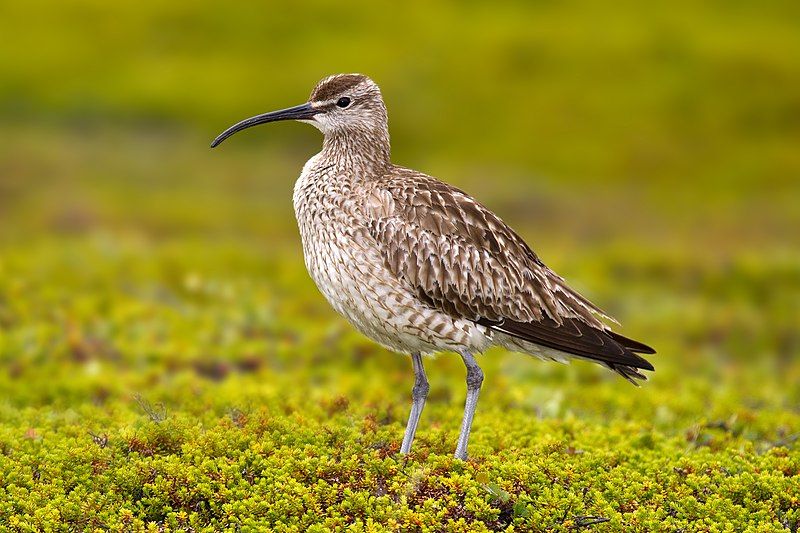
The Eurasian or common whimbrel is a species of wader belonging to the Scolopacidae family, commonly found in areas of subarctic Asia and Europe. This species is also known as the white-rumped whimbrel in North America and is one of the most widespread of the curlews.
The Eurasian or common whimbrel breeds across much of subarctic Asia and Europe, as far south as Scotland. This species of bird is adapted to live in cold climates with its plumage providing protection from the elements.
The Eurasian or common whimbrel prefers to inhabit wetlands, grasslands, and marshy habitats. It is a medium-sized shorebird, measuring around 30–34 cm in length with a wingspan of around 65–75 cm. The upper parts of this species are grey-brown and the underparts are white.
The bill is long and slightly decurved, and the head pattern is distinctive, with a white eyebrow, black crown and white neck stripes. The Eurasian or common whimbrel feeds by probing in the mud or searching for small invertebrates in the grass.
It also feeds on amphibians, mollusks, and insects. This species is migratory in nature, with most individuals wintering in Africa, though some populations remain in their breeding range year-round.
The Eurasian or common whimbrel is listed as a species of least concern on the IUCN Red List.
| Kingdom | Animalia |
| Phylum | Chordata |
| Class | Aves |
| Order | Charadriiformes |
| Family | Scolopacidae |
| Genus | Numenius |
| Species | N. phaeopus |
14. Pygmy Cormorant
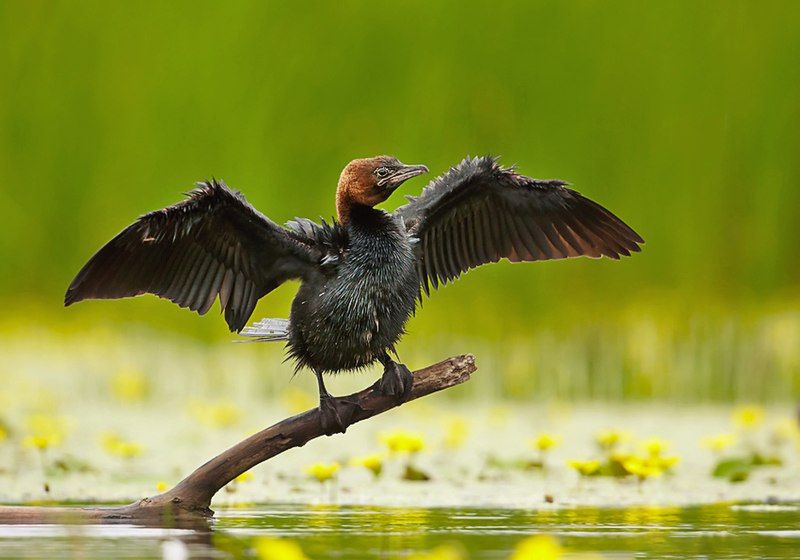
The Pygmy Cormorant is a species of seabird belonging to the Phalacrocoracidae family. It primarily breeds in south-eastern Europe and south-western Asia.
While some populations stay in the same location all year round, others are partially migratory, with northern populations travelling south during the winter months, usually within the same geographic region.
This species is also a rare migrant to Western Europe, although the frequency of this occurrence is not known. The Pygmy Cormorant is a medium-sized species with a wingspan of up to 70 cm. It has a dark plumage, with a black and white head and neck.
Its diet consists of a variety of aquatic creatures, such as small fish, crustaceans, and insects. The Pygmy Cormorant is listed as a species of Least Concern on the IUCN Red List, due to its large and widespread population.
| Kingdom | Animalia |
| Phylum | Chordata |
| Class | Aves |
| Order | Suliformes |
| Family | Phalacrocoracidae |
| Genus | Microcarbo |
| Species | M. pygmaeus |
15. Egyptian Goose
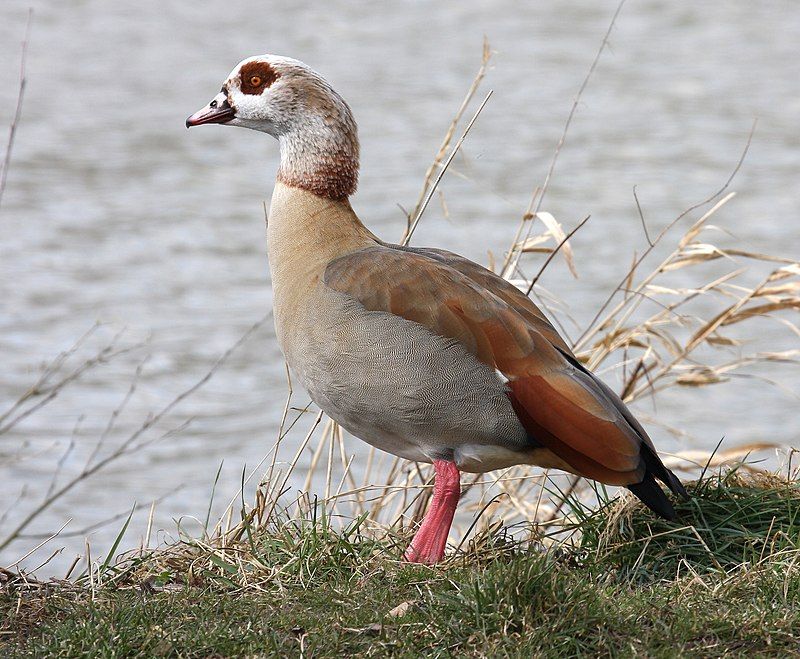
The Egyptian Goose is a species of bird that is native to Africa and is part of the duck family Anatidae. The species is popular among people as an ornamental bird, which has led to it being introduced to many places outside of its natural range.
This includes Europe, the United States, and other regions. The popularity of these birds is not only because of their beauty but also because of their adaptability and the ease with which they can be kept in captivity.
They are also known to be relatively hardy birds, which makes them an appealing option for those who want to keep them as pets. The Egyptian Goose is a medium-sized waterfowl, and its plumage ranges from grey to brown to white.
They have a large head with a long neck, and their bills are long and pointed. The wings are short and rounded, and they have a short, pointed tail.The males and females of this species look similar, with males being slightly larger than females.
Both sexes have a bright yellow eyes, but males have a darker bill. In the wild, the Egyptian Goose will often be seen in small flocks or pairs. They feed mainly on grasses, grains, and insects, and they will also eat small fish and crustaceans.
They are also known to eat some fruits and vegetables. In terms of their behaviors, these birds have a fairly social nature and they can be quite vocal.
They are also very active flyers, and they have been known to migrate to different areas in Africa. Overall, the Egyptian Goose is an interesting species that is popular among people for its ornamental value.
Because of its popularity, it has been introduced to many places outside of its natural range, and it is now a common sight in many parts of Europe, the United States, and other regions.
| Kingdom | Animalia |
| Phylum | Chordata |
| Class | Aves |
| Order | Anseriformes |
| Family | Anatidae |
| Genus | Alopochen |
| Species | A. aegyptiaca |
16. Anhinga
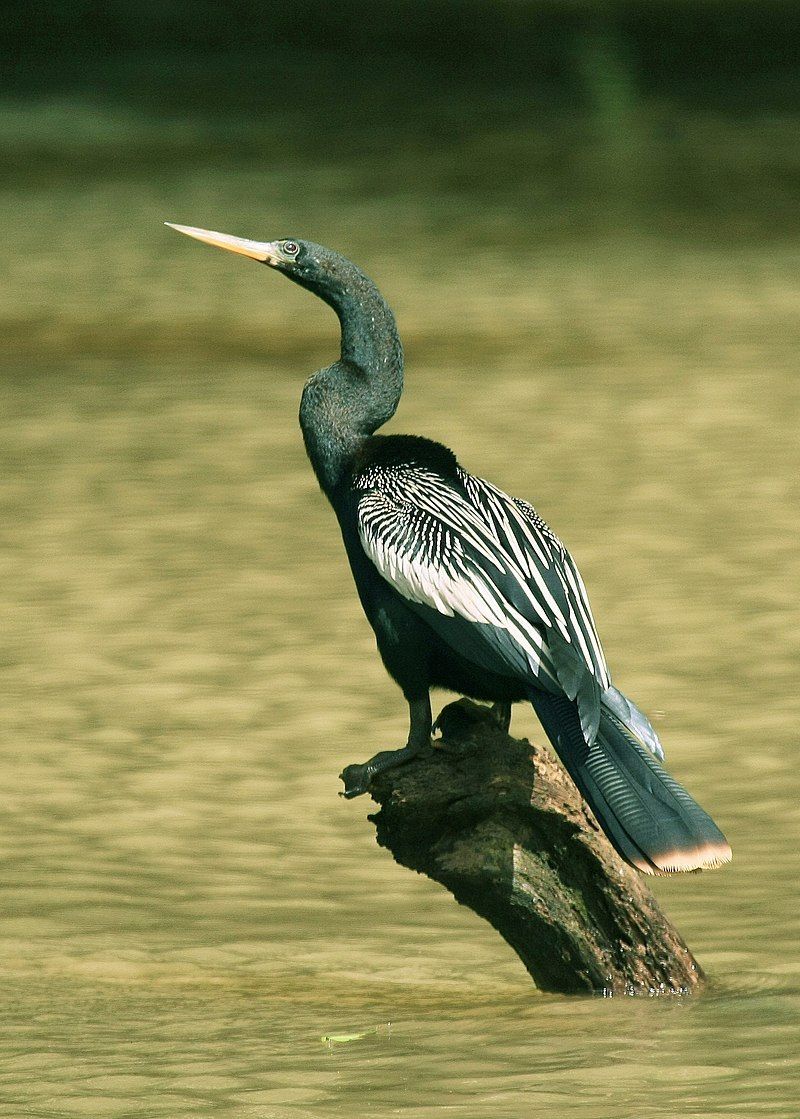
The Anhinga is a unique water bird found in the warmer climates of the Americas. It is so named because of its Tupi (Brazilian) origin, ‘a’ñinga, which means ‘devil bird’ or ‘snake bird’.
It is also known as the snakebird, darter, American darter, or water turkey. The Anhinga is a large bird, usually around one foot tall, with a long, thin neck and a large, pointed bill. Its feathers are predominantly black and white, with a glossy sheen.
Its wings are long, narrow and pointed, and its long tail feathers are often held in a V-shape. Its most distinctive feature is its long neck, which it uses to spear fish underwater. The Anhinga is found in swamps, marshes, and other shallow wetlands.
It is an excellent swimmer, using its wings and feet to propel itself underwater in search of fish and other aquatic prey.
It is an excellent fisher, using its beak to spear fish and then swallowing them whole. The Anhinga is an important species in its native wetlands, as it helps to keep the fish population in check.
It also helps to spread the seeds of aquatic plants and plays a role in the food chain by providing food for other animals. Overall, the Anhinga is an interesting and important species of bird, which plays an important role in its native habitats.
It is an amazing swimmer, an excellent fisher, and a vital part of its ecosystem. Its unique name and striking appearance make it an interesting species to learn about and observe.
| Kingdom | Animalia |
| Phylum | Chordata |
| Class | Aves |
| Order | Suliformes |
| Family | Anhingidae |
| Genus | Anhinga |
| Species | A. anhinga |
17. Ardea Alba
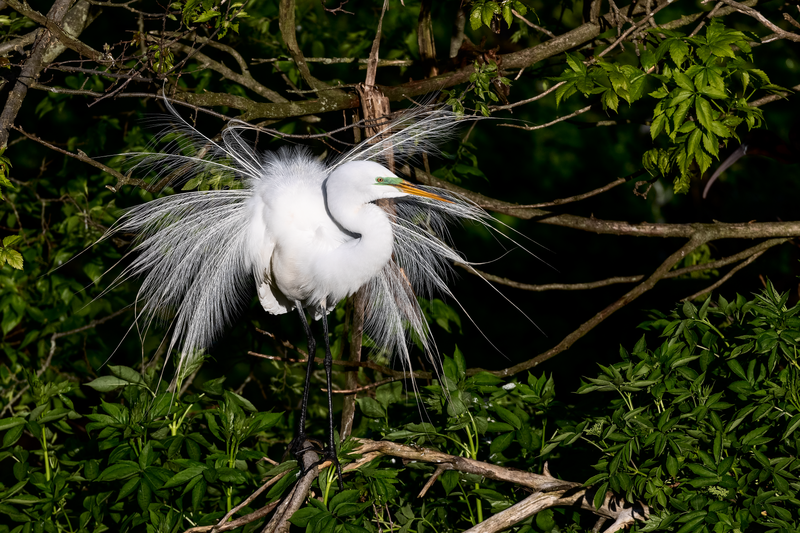
The great egret is a species of heron found in many parts of the world. It is also known as the common egret, large egret, or great white egret or great white heron.
There are four subspecies of the great egret, which are located in Asia, Africa, the Americas, and southern Europe. This species is widely distributed across these areas and is now beginning to spread to more northern areas of Europe.
The great egret is a large bird, typically having a wingspan of up to four feet. It has a white body with yellowish-orange legs and a long, sharp yellow bill. The great egret is a graceful bird, with slow, deliberate movements.
It is a solitary hunter, typically preying on fish, frogs, and other small animals. The great egret is a beautiful species of heron, and it can often be seen standing on the banks of rivers or lakes, waiting patiently for its next meal.
Its elegant white feathers and yellow bill make it stand out in any landscape, and it is a common sight in many parts of the world.
It is a species that is adaptable and resilient, and its ability to spread out across different geographical areas has made it a symbol of strength and durability.
| Kingdom | Animalia |
| Phylum | Chordata |
| Class | Aves |
| Order | Pelecaniformes |
| Family | Ardeidae |
| Genus | Ardea |
| Species | A. alba |
18. Eurasian Jay
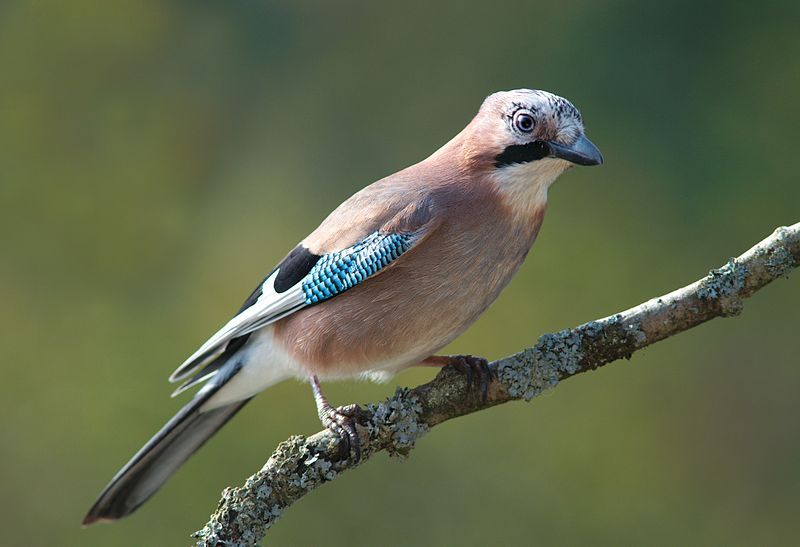
The Eurasian jay is a member of the Corvidae family of passerine birds. This species has a pinkish-brown plumage, with a distinctive black stripe running down each side of its whitish throat.
Its wings also feature a bright blue panel, which contrasts with its otherwise brownish plumage. The tail of this species is black. This combination of colours makes the Eurasian jay quite distinctive and easily recognizable.
In terms of behavior, the Eurasian jay is quite social, often living in large groups of up to 15 birds. The species is omnivorous, with its diet consisting of a variety of animal prey, such as insects and small reptiles, as well as some plant matter.
The birds often search for food on the ground, but they are also adept at foraging in trees and bushes. They are also known to store food for future consumption.
The Eurasian jay is native to much of Europe and Asia, occurring in a wide range of habitats, from woodland to open grassland. The species is not considered to be at risk, and its population is considered stable.
| Kingdom | Animalia |
| Phylum | Chordata |
| Class | Aves |
| Order | Passeriformes |
| Family | Corvidae |
| Genus | Garrulus |
| Species | G. glandarius |
19. White Stork
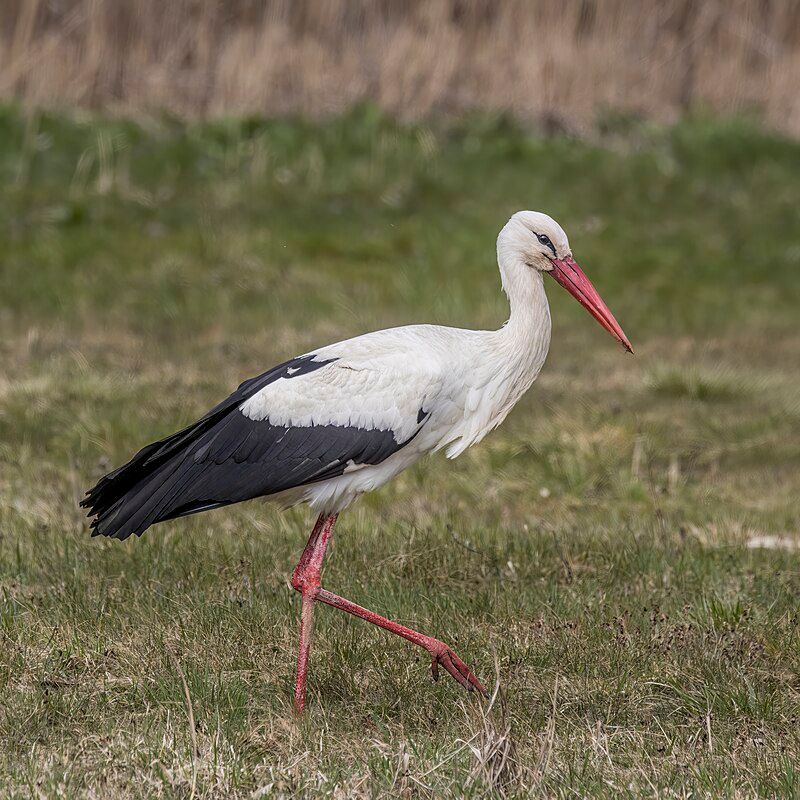
The white stork is a large bird that belongs to the stork family, Ciconiidae. It is easily identified by its white feathers, which are contrasted by black feathers on the wings. Adults of this species have long, red legs and beaks that can reach up to 100-115 cm in length.
Their wingspan is an impressive 155-215 cm, allowing them to soar through the sky with ease. These birds are majestic creatures, often seen in wetlands, grasslands, and agricultural fields.
They feed mostly on frogs, fish, and other small creatures, but they are also known to scavenge for food when necessary. Despite their size, they are capable of amazing feats of flight, using their wings to glide over long distances.
White storks are also known for their long migrations, which can last up to several months. During this time, they travel thousands of miles in search of better weather, food, and nesting sites. These birds are highly social creatures, often seen nesting in large groups.
The white stork is an amazing bird, with a unique appearance and amazing abilities. Its long migrations, impressive size, and beautiful colors make it an awe-inspiring sight in the sky.
| Kingdom | Animalia |
| Phylum | Chordata |
| Class | Aves |
| Order | Ciconiiformes |
| Family | Ciconiidae |
| Genus | Ciconia |
| Species | C. ciconia |
20. Eurasian Bittern
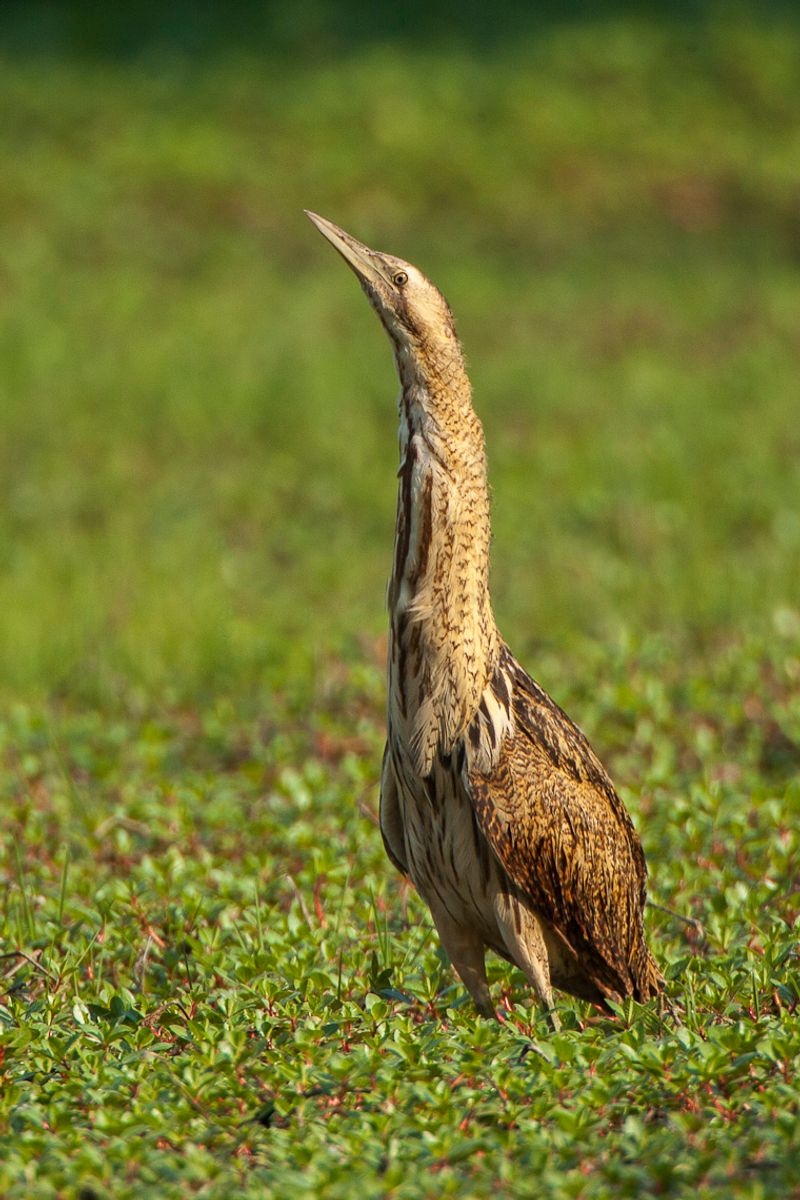
The Eurasian bittern, also known as the great bittern, is a species of wading bird in the heron family Ardeidae. It is part of the bittern subfamily, which includes a number of heron species.
This species has two subspecies – the northern race which is found in Europe, the Palearctic, and the northern coast of Africa, and the southern race which is endemic to parts of southern Africa.The Eurasian bittern is a large species with a long neck and long legs.
It has a distinctive mottled brown plumage which allows it to blend in with its natural habitat.
The males have a loud, booming call which can be heard over long distances and is distinct from other heron species. The Eurasian bittern is a solitary bird and is typically found in wetlands, marshes, and along the edges of rivers and lakes.
It feeds mainly on fish, frogs, and small mammals. The female lays her eggs in a nest constructed of reeds, leaves, and other vegetation. The Eurasian bittern is considered to be an endangered species due to habitat destruction and hunting.
Conservation efforts are underway to protect these birds and their habitat, including the creation of protected areas and the implementation of hunting regulations.
| Kingdom | Animalia |
| Phylum | Chordata |
| Class | Aves |
| Order | Pelecaniformes |
| Family | Ardeidae |
| Genus | Botaurus |
| Species | B. stellaris |
21. Scopoli’s Shearwater
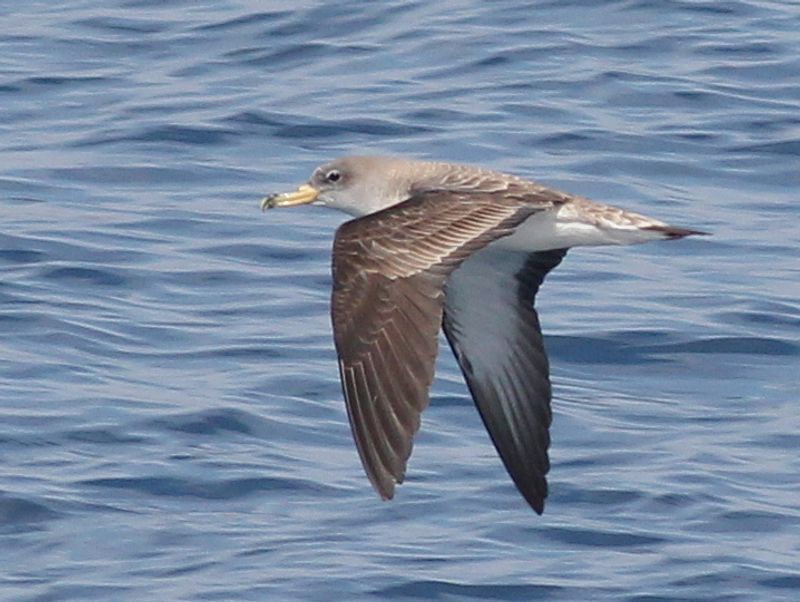
Scopoli’s shearwater is a type of seabird that belongs to the petrel family Procellariidae. It is a popular species among birders as it can be found in the Mediterranean during the breeding season. It has a brownish-grey color on its back and wings, with a white underside.
The areas where it breeds are mostly rocky islands and steep coastal regions. When it is not breeding, the bird can be found foraging in the Atlantic. It is an agile flyer and a capable hunter, using its long wings to cover long distances over the ocean in search of food.
It often hunts in small flocks, diving down into the water to capture fish and other prey. The species is also known for its loud, high-pitched call, which has been likened to a laughing sound.
| Kingdom | Animalia |
| Phylum | Chordata |
| Class | Aves |
| Order | Procellariiformes |
| Family | Procellariidae |
| Genus | Calonectris |
| Species | C. diomedea |
22. European Nightjar
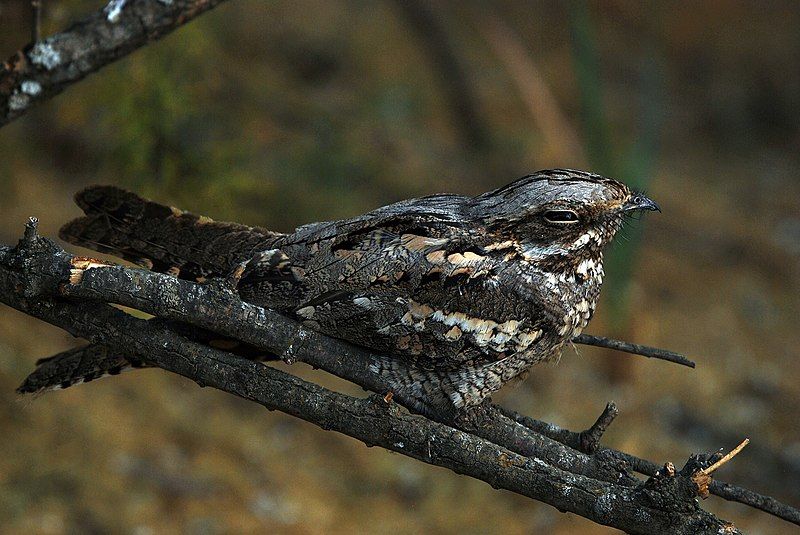
The European nightjar, also known as the common goatsucker, Eurasian nightjar, or simply nightjar, is a species of bird found in the nightjar family.
It is mainly active during crepuscular hours (dusk and dawn) and at night, and is found across most of Europe, the Palearctic region, and as far east as Mongolia and Northwestern China.
This bird has a distinctive appearance, with its long wings and short legs, mottled in brown, grey, and white feathers.
Its wingspan can reach up to 53 centimeters, while its body length can reach up to 28 centimeters. The European nightjar is an insectivore, and its diet consists mainly of moths and other flying insects.
During the breeding season, from April to August, they mostly nest on the ground.
They lay up to three eggs in a clutch and its eggs are usually brown with white spots. The European nightjar is a shy and secretive species and is usually found in open woodlands, moorlands, and heaths.
They are usually quite vocal during the breeding season, with males making a loud ‘churring’ sound. Overall, the European nightjar is an interesting species of bird, with its unique appearance and behavior.
It has a wide range and is an important part of the ecosystem in which it lives.
| Kingdom | Animalia |
| Phylum | Chordata |
| Class | Aves |
| Clade | Strisores |
| Order | Caprimulgiformes |
| Family | Caprimulgidae |
| Genus | Caprimulgus |
| Species | C. europaeus |
23. Great Spotted Cuckoo
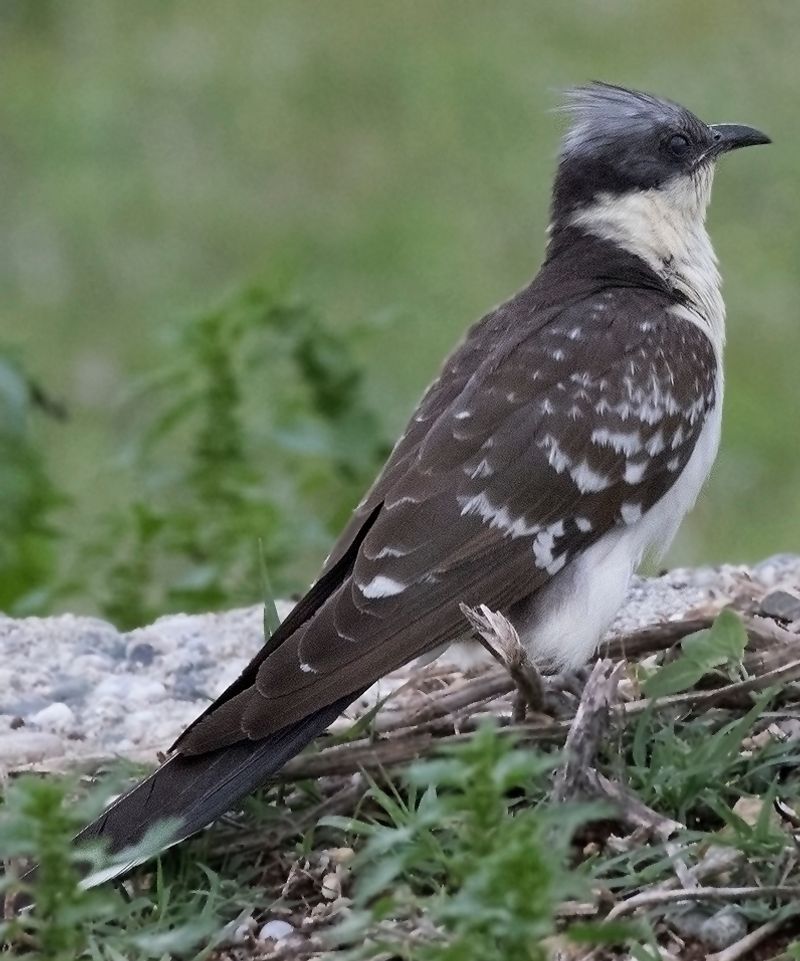
The great spotted cuckoo is a species of bird belonging to the order Cuculiformes, which includes other species such as roadrunners, anis, and coucals. This species is found throughout Africa and the Mediterranean Basin.
It is a type of bird known as a brood parasite, meaning that it will lay its eggs in the nests of other birds, such as the Eurasian magpie. This behavior is seen in other species of cuckoos as well in order to give their young the best chance of survival.
The female cuckoo will search for a suitable nest and lay her eggs in it, leaving the host parents to rear her young. In this way, the cuckoo can ensure that her offspring will receive the care they need to survive and thrive.
| Kingdom | Animalia |
| Phylum | Chordata |
| Class | Aves |
| Order | Cuculiformes |
| Family | Cuculidae |
| Genus | Clamator |
| Species | C. glandarius |
24. Rock Dove
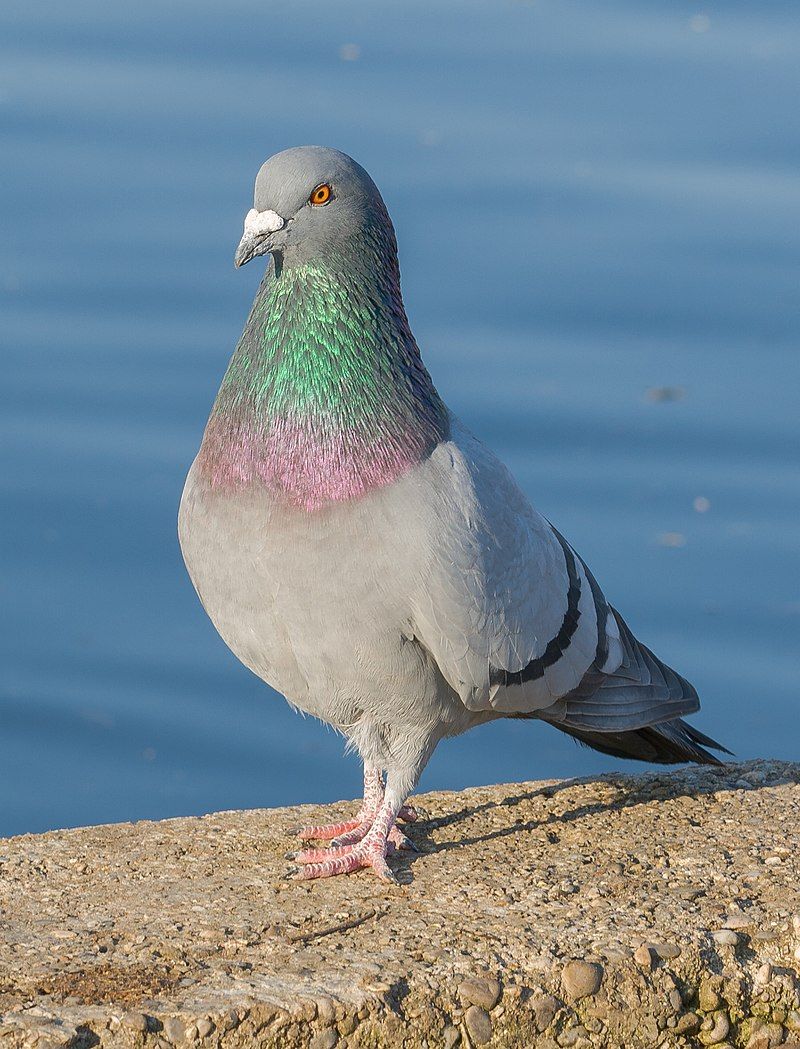
The rock dove, rock pigeon, or common pigeon is a species of bird belonging to the family Columbidae. It is often referred to as simply the “pigeon”, and is the ancestor of the domestic pigeon.
Domestic pigeons were originally bred from this species, but due to escapees, the populations of wild or feral pigeons have increased in many parts of the world. Feral pigeons can be found in both urban and rural settings, and are often seen in large flocks in public areas.
They have adapted to human environments, and are considered both an annoyance and a nuisance due to the mess they leave behind.
| Kingdom | Animalia |
| Phylum | Chordata |
| Class | Aves |
| Order | Columbiformes |
| Family | Columbidae |
| Genus | Columba |
| Species | C. livia |
Conclusion
The birds of İzmir are an integral part of the city’s culture and landscape. With its diverse and vibrant birdlife, İzmir is a great place to observe and appreciate nature.
From the colorful flamingos of Karşıyaka to the majestic eagles of Sapanca, İzmir’s birds provide a glimpse into the region’s ancient past and provide a welcome respite from the hustle and bustle of city life.
Whether you’re a bird-watcher or a casual observer, İzmir’s birds are sure to be a memorable and enjoyable experience.